The music-making industry has accepted MIDI keyboard controllers. These simple keyboards are used by contemporary musicians and producers, thanks to the increase in virtual instruments in the studio and on stage. The best MIDI keyboards should meet your music production or music making needs. With a host of these keyboards on the market, it is challenging for users to choose the best. Below is a guide on how to pick one for your needs.
Best Midi Keyboard Controllers
What are MIDI Keyboards?
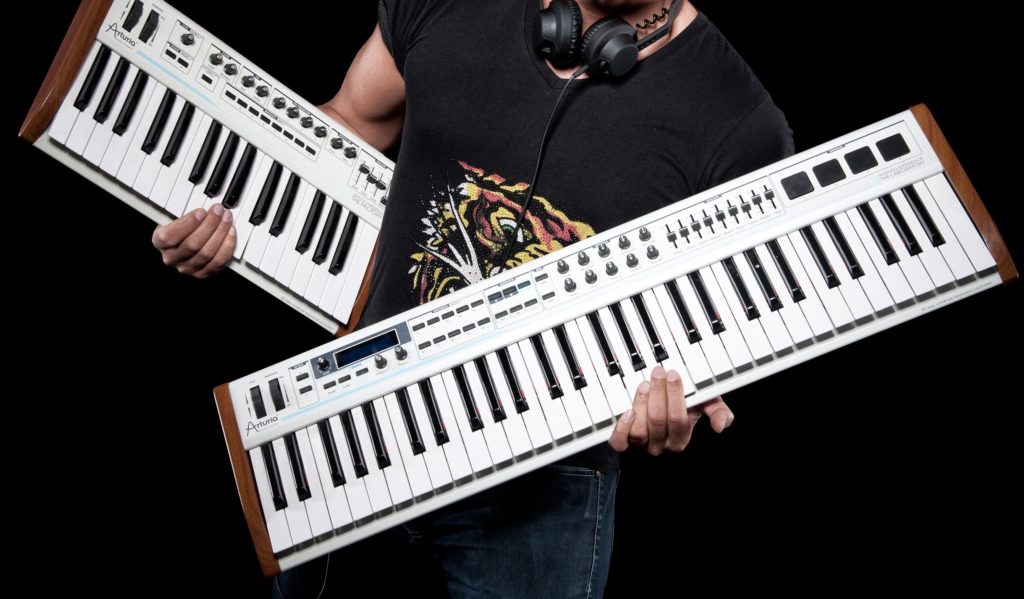
MIDI controllers have been on the market for the last few decades. These simple units were developed with the aim of allowing live performers to control multiple synthesizers from a single keyboard. This concept has worked magic many years later with music producers, songwriters, and studio musicians creating music from these keyboards with a laptop. The controller offers flexibility and variety.
Basically, keyboard controllers feature synth-style keys/piano keys, with knobs, sliders, and buttons. These keys will send data (using the language of MIDI) to hardware synthesizers, computer software synthesizers, or to sequencers. Usually, the keyboard controllers do not have internal sound generating capacity, but they work to control the sounds of other devices. These devices are versatile and highly portable. They can be integrated with virtually any contemporary music software and hardware. Some are compact enough to fit into your laptop bag.
What To Look For In MIDI Keyboard Controller
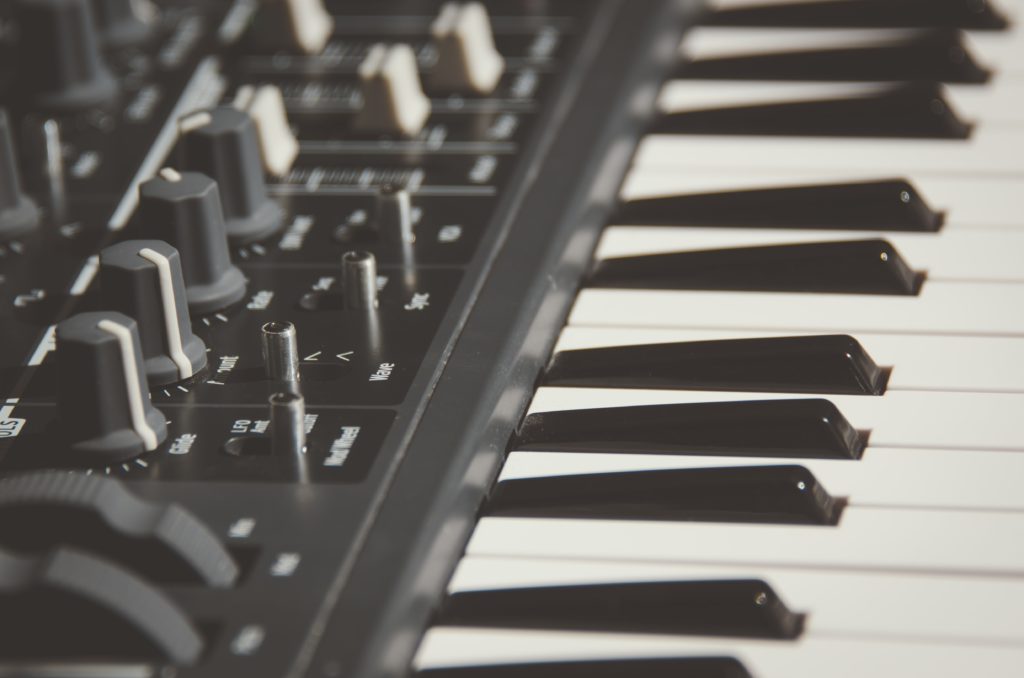
Sliders, Knobs, and Buttons
The top panel of the controllers have faders, buttons, and knobs. These give you hands-on control of the software you have connected your controller to and they also enhance the transmission of data. You can control the DAW of your choice from the controller. This involves controlling aspects such as synth filter cutoff, amp envelope, and resonance among others. This gives you an analog feel. Nowadays, controllers are engineered with automapping technology, which makes the faders and knobs match the DAW software applications.
Key Count
Key counts make the main difference between most controllers. These devices sport 88, 61, 49, or 25 keys. You can pick any that meets your space based on your studios space, your playing techniques, whether single or both hands, and whether you need a controller for on-the-road music production. Small one-hand playable controllers may be 20 inches long while the large controllers might be more than 50 inches in length. Occasionally, you might see a controller with 76, 73, 37, or 32 keys.
Keyboard Action
Keyboard action refers to the response of the keys to playing. As a player, you need the keys to be feeling comfortable at all times. The type of action you choose will be dictated by what you are used to and the style of music you do. There are three keyboard action types – weighted hammer action, semi-weighted, and synth action.
Weighted hammer action gives you the feeling of a traditional piano keyboard. However, a controller has no hammers or strings. The controller manufacturers employ a variety of techniques to apply springs and weights to replicate the piano keys action. If you are used to a piano, a weighted hammer action controller will be suitable for you. This type of action is typical on 88 keys controllers.
Semi-weighted action keys have the same design with weighted keys, but they have less key resistance. If you need the feel of a piano with relatively less resistance, a semi-weighted key action controller will be ideal.
Synth-action keyboards give you the feeling of an electronic organ. They have spring loaded keys that are light and easy to move. The keys spring back to their resting position relatively quickly, which is advantageous when you need to play fast music. If by nature, you are not a pianist, this is a suitable controller for you.
As someone who was never trained on a professional keyboard, I prefer the synth-action feel. I’m just trying to play out melodies in my head, or sometimes using the keyboard to control a wide variety of instruments. So that works best for me, but what you prefer will depend on the factors mentioned before.
Keys After-touch
An aftertouch effect is experienced when a player leans their finger deeper into a key to provide extra pressure that ends a synth lead line in a tasty vibrato. Aftertouch shows expressiveness in music. Aftertouch is found on high-end devices and is a feature you might not necessarily need until you have used it for the first time.
Aftertouch comes in two forms, monophonic and polyphonic. In monophonic aftertouch, the controller has a rail pressured by any key to send an average value for all keys held. For polyphonic aftertouch, you can independently vary parameters on different notes struck.
I/O Options
Most MIDI controllers transmit via USB, but for some complex setups, the units might have 5-pin DIN jacks, which let you connect your keyboard controllers with external MIDI instruments. You can use CV (control voltage), and Gate outputs to play and modulate classic non-MIDI synth gear. Most controllers are fitted with a switch type pedal jack. An expression pedal boosts the quality of your performances while letting you control different parameters with ease.
Performance Pads
Performance pads make it swift for players to hit notes. These pads sense the velocity of the player’s hands. This is unlike the conventional black and white keys. In modern controllers, there are about eight, sometimes more, performance pads you can use to trigger loops and play drums. On many controllers, the pads sense aftertouch. So many pads on the rig coupled with knobs, sliders and buttons and LCD screen will take up more space on the keyboard’s deck, making the controller heavier and bigger. When choosing pads and other keys, therefore, consider the size of your workspace.
DAWs/Software
Most keyboard controllers integrate swiftly with different DAWs/Software. Ableton Live is one of the popular and easy to use DAW. A good DAW should be controlled by the controller.
Other Features
Some controllers are fitted with extra features, making them more than just keyboards. A keytar, for instance, is designed as a strap-on device that gives keyboardists a chance to play it like a guitar, especially in live performances. There are also pad devices that let you trigger MIDI samples by touching a pad. You can use these when programming drum beats. There are also wind controllers, which abandons keyboard-style. It allows wind players to access software and MIDI sound modules.
When shopping for the best MIDI keyboards, users should consider their skills level, their music playing needs, space and portability, and their budget.
The Best MIDI Keyboards For Producers and Songwriters
M-Audio Code Series
The M-Audio Code series is designed for music producers in the studio and on-the-road, and for DJs and musicians playing live music on stage. It features velocity sensitive keys, making it feel natural to play. These keys have aftertouch, letting you add expressiveness to your music. One to the top deck, the controller 16 velocity sensitive pads each with a different LED color, CC value, and Note. It also has a touch X/Y pad, which lets you control the effects and virtual instruments. The USB-bus powered controller is highly portable and easy to use on the go.
You are offered with 5-pin MIDI jacks for input and output. This gives you the power to control your synths as you like. The units in this series are fitted with pitch and mode wheels, buttons, faders, knobs, and transport control with different modes, giving you control of the DAW and virtual instruments. It also sports a split keyboard designed with 4 assignable zones. This lets you access virtual instruments from your computer with great ease and at the same time. Even better, you are offered pedal inputs, making it easy for you to control synths. The deck also has a 6-digit LED display. It runs with Ableton Live Lite, Hybrid 3 and Loom DAWs.
- Offered with a clear display
- Variety of input methods for better control
- Has aftertouch for expressiveness
• A limited number of pads
Native Instruments Komplete Kontrol S Series
The Komplete Kontrol S Series, as its name suggests, are controllers designed to give you control of all sound aspects. The controllers in this series are designed to integrate perfectly with Komplete 10 DAW and Komplete 10 Ultimate. The KOMPLETE KONTROL software offers 100 percent integration with KOMPLETE controllers and other instruments from the company. Each unit features good quality Fatar keys that provide a superior feel compared to other keyboards. It also has high-quality encoders, giving you total control of the Komplete 10 or 10 Ultimate parameters. Each unit has light guide key illumination with the advanced models such as the 88 keys having aftertouch.
The illumination allows clear view display, letting you monitor the creative process. The controllers have an expressive touch strip. The USB-bus powered unit enables you to control the DAW from its decks with ease. You can choose between 88, 61, 49, and 25 keys controllers with slight differences in features.
- Great value for money
- Lets you add expressiveness to music
- Easy to use keys, buttons, pads, and controls
- Does not integrate well with some DAWs
- Relies heavily on Native Instruments software to provide the best value
Arturia KeyLab
Arturia Keylab controllers are fitted with top-notch keyboard features, giving you complete hands-on control of different parameters. The controllers integrate perfectly with the many sounds in the Arturia’s Analog Lab-2 software. The numerous features on the unit let you create tracks from simple ideas. The keyboard is fitted with all keys, knobs, and buttons needed to control the DAW. Each unit from the Arturia Keylab is considered a universal MIDI controller thanks to their perfect integration with numerous third-party instruments and music-making software. The controls, including transport controls, offer you double duties, letting you control the DAW of your choice and also control other instruments connected to the controller.
Controllers in this series are accompanied by an excellent software package. Here, you have access to great hit sounds especially from the V-collection from Arturia. The DAW offers 17 synths with more than 5000 sounds. The True Analog Emulation Tech from Arturia enhances the variety of sounds. You are also offered the popular Ableton Live Lite, known for its simple interface and its powerful music-making design. With the Arturia Keylab, you can choose the number of keys you need from 25 to the highest 88 keys.
- Offered with a bungle of DAW package
- Gives you access to more than 5000 sounds
- Numerous controls for easy music making
- Great price-performance ratio
- Made of light materials, limiting durability
Akai MPK (225/249/261) Series
The Akai MPK2 Series are controllers designed to offer an all-in-one solution. They come as performance pads and keyboard controllers combined with deep software integration. The controllers provide enhanced workflow powered by MPC workstations. The units come fully integrated with a complete interface to manipulate effect plugins, different software, virtual instruments, and other connected devices. The controllers are optimized to work with your Mac or PC connected by USB with easy plug-n-play connectivity.
The controllers are fitted with semi-weighted full-size keys with a conventional piano-design keyboard. This gives you a natural feel. The keys are velocity sensitive with aftertouch. Each controller is offered with MPC Essential and Ableton Live Lite as DAWs. Integrating these DAWs will provide you with thousands of sounds for your music making.
- Offered ready to use with needed software
- The piano-style keyboard provides natural piano feel, but still easy to play
- Highly versatile
- Relatively bulky
Korg Triton Taktile
Triton Taktile sports a stylish design, making it look professional. The unit is designed for functionality and style, it features semi-weighted keys that you can use on music workstations and synthesizers. You can use the controller with workstations such as KROME and KingKORG. The unit is loaded with different functions that make it easy to play. The touchpad on this controller lets you play melodies with one finger while trigger pads enhance the generation of chords.
The unit is fitted with basic controllers such as sliders, switches, and knobs, letting you produce music right away. The wide variety of features stimulate your creativity. With the Triton Korg workstation, users have access to more than 512 sounds.
- Simple and easy to use interface
- Designed stylish yet functional
- Integrates with different DAWs
Conclusion
The M-Audio Code Series is the winner in this roundup. The series have controllers that range in a number of keys to choose from and the top deck has all the controls you need to make great music. The controllers integrate perfectly with different DAWs, and it offers you complete hands-on control. Each controller in the series has extra features such as aftertouch.

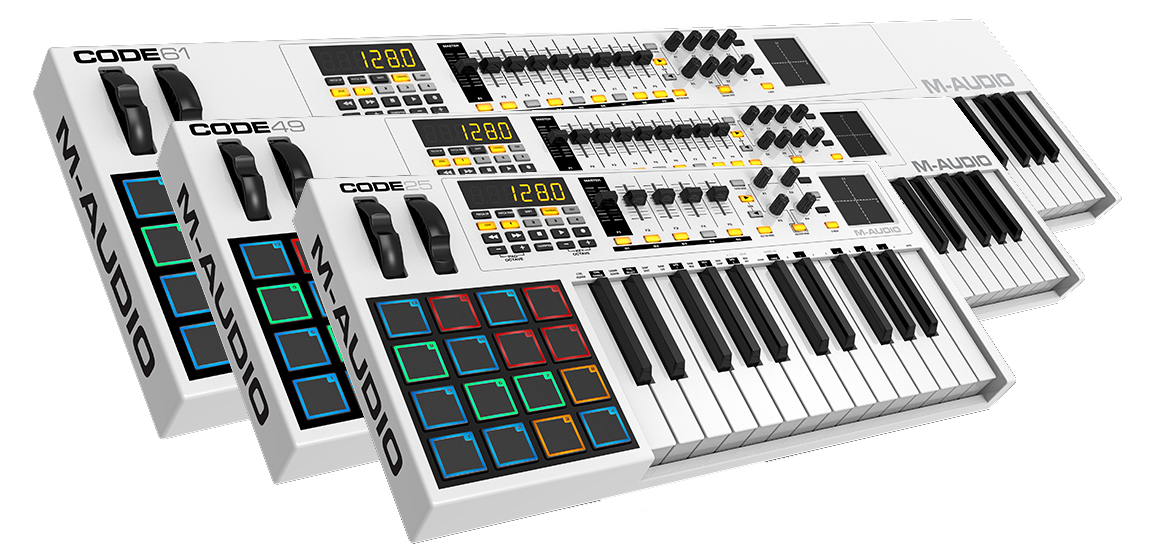





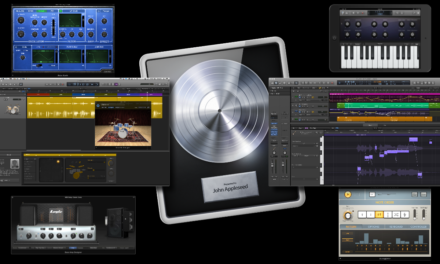
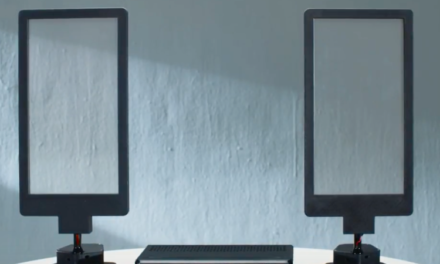
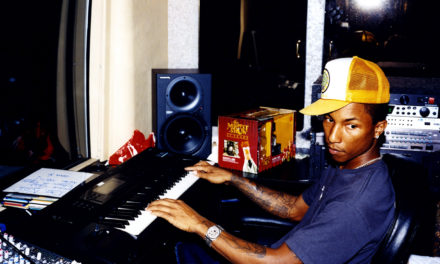

Recent Comments